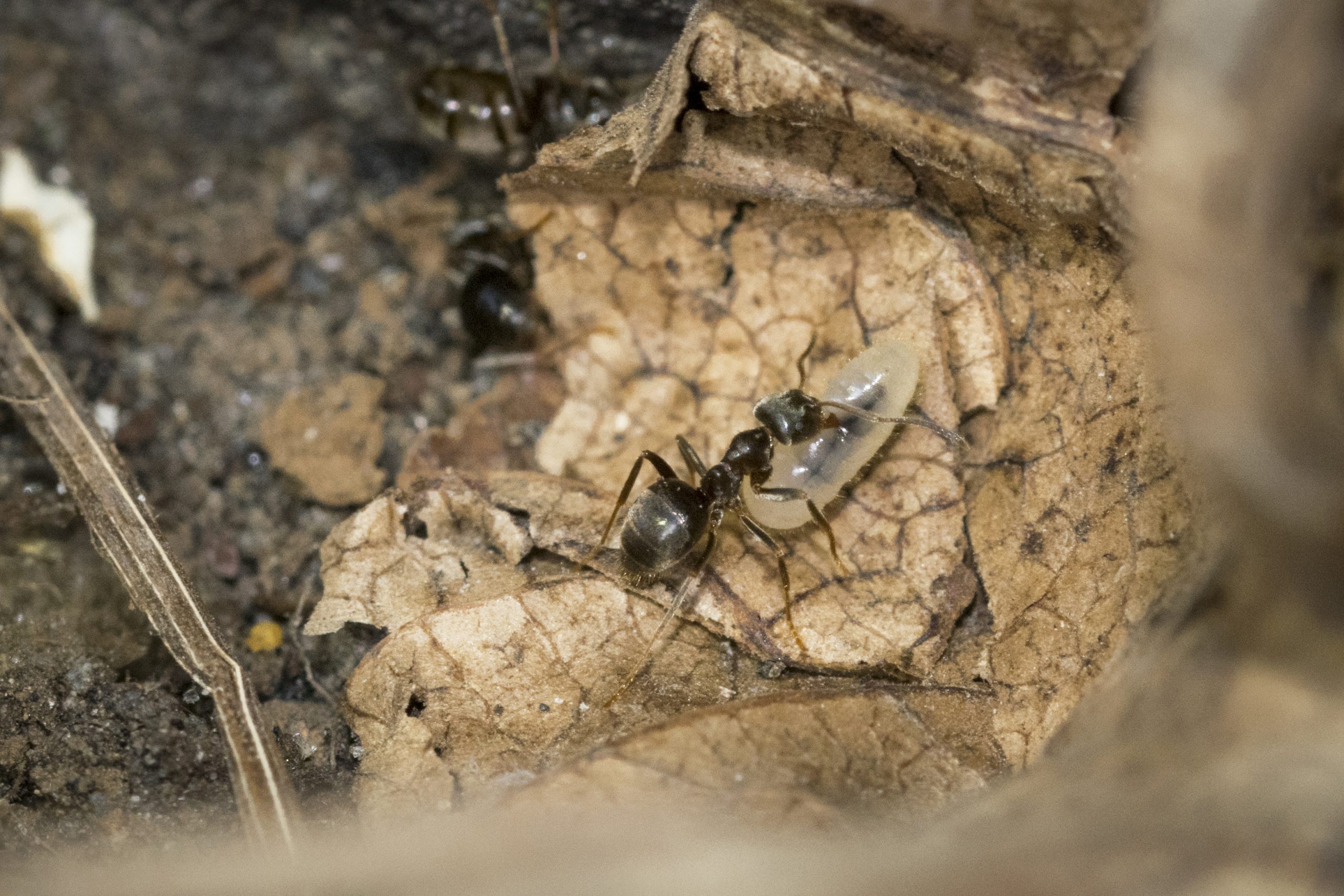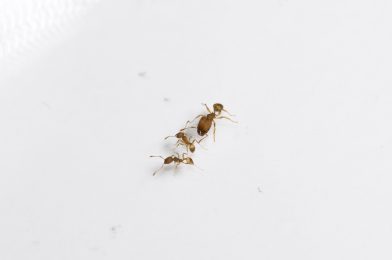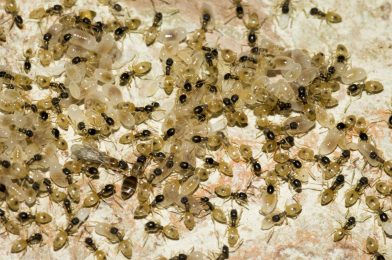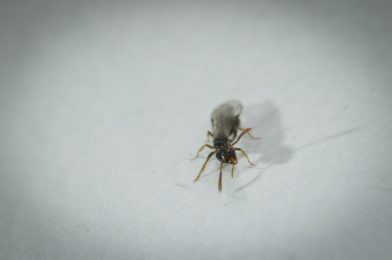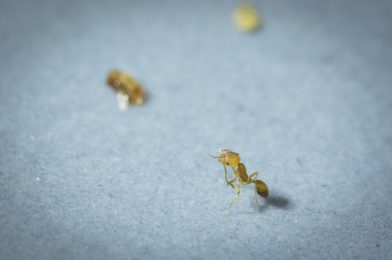These ants have been found recently inside an apartment in Reykjavík. They belong to the hyperdiverse genus Pheidole, which comprises more than 1200 described species and is characterized by two castes of workers: major and minor. It is hard to say at this stage at which species these ants belong, and we will further investigate, but we believe this to be a significant discovery for our research.
Author: Marco Mancini
Ant queen laying an egg
Ant workers perform several different tasks, including caring for eggs, larvae and the queen; cleaning and patrolling the nest; foraging; defending against invaders and parasites. Typically, younger workers remain in the nest to take care of eggs and larvae while older ones perform more risky duties, such as foraging outside and defending the colony. In this footage, we can observe a young worker helping the queen to lay an egg, which will be moved to the nearest egg pile.
Roger’s ant worker
A rather uncommon sight – Roger’s ant (Hypoponera punctatissima) workers are strongly cryptic and rarely collected: they spend all their life wandering underground in search of food. Thanks to a very fortunate event, we succeeded in capturing the exact moment in which a worker (the one on the left) met a queen (in darker brown) for a quick exchange of information.
Ghost ant feast.
Ghost ant (Tapinoma melanocephalum) workers mostly need carbohydrates as a source of energy and they love to consume honeydew excreted by mealybugs and aphids. In an artificial nest, a colony can be almost exclusively fed with maple syrup and sucrose solution droplets. Nevertheless, a certain amount of protein is needed since larvae and reproductive adults rely heavily on proteins for growth and egg production respectively. Our big ghost ant colony is avidly feeding on this piece of king mealworm (Zophobas morio) since the queens just produced a large number of eggs and tens of larvae are already developing.
Life in Reykjadalur
This colony of Hypoponera punctatissima (Roger’s ant) lives in peace under a stone in the warm soil of the geothermal area around Hveragerði. Since these ants are rarely found in natural habitats, further research is needed.
Ghost ant colony
This large colony of ghost ants (Tapinoma melanocephalum) has been found under a flowerpot inside an apartment in The Capital Region: two queens, one with and one without wings, are clearly recognizable on the the picture.
Ant queen
Roger’s ants (Hypoponera punctatissima) are very rare in natural habitats and in Iceland they can only survive with the warmth provided inside heated buildings. The alates swarm from December throughout July and they are attracted to lights, while workers are rarely seen because of their cryptic habits.
Lifecycle of a black garden ant
The ant life cycle (Lasius sp.) – 1. Egg cluster; 2. 3. 4. Larvae of different instars; 5. Pupa that spun a silk cocoon around itself (some species develop without cocoon); 6. Adult ant
Photo: Marco Mancini
Pharaoh ant
A pharaoh ant (Monomorium pharaonis) after feeding on chocolate croissant crumbs. Pharaoh ants are omnivorous and feed on various sources of fat, protein, and carbohydrate. Since they also actively prey on small insects, in May 1931 a colony has been successfully introduced to exterminate bed bugs in British barracks in Gibraltar.
Ant worker carrying a larva out of the nest
The entrance of an ant nest can be very busy in these warm Icelandic summer days.
Workers are tirelessly walking in and outside the nest: foragers that leave the nest to look for food and then come back a few minutes later with food in their mandibles.
At the end of the video, we can also see a worker carrying a larva. Since many Lasius sp. may exhibit weak polydomy (the same colony can occupy two or more separated nests), this ant is presumably moving the larva from that nest to the next one, a few centimeters far.
